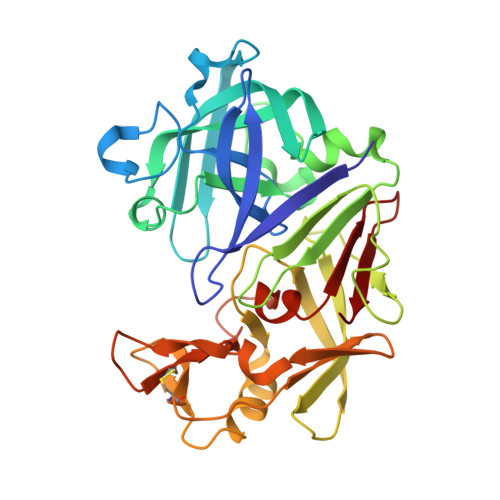Tracing binding modes in hit-to-lead optimization: chameleon-like poses of aspartic protease inhibitors
Kuhnert, M., Koster, H., Bartholomaus, R., Park, A.Y., Shahim, A., Heine, A., Steuber, H., Klebe, G., Diederich, W.E.(2015) Angew Chem Int Ed Engl 54: 2849-2853
- PubMed: 25630461
- DOI: https://doi.org/10.1002/anie.201411206
- Primary Citation of Related Structures:
3PSY, 3WZ6, 3WZ7, 3WZ8 - PubMed Abstract:
Successful lead optimization in structure-based drug discovery depends on the correct deduction and interpretation of the underlying structure-activity relationships (SAR) to facilitate efficient decision-making on the next candidates to be synthesized. Consequently, the question arises, how frequently a binding mode (re)-validation is required, to ensure not to be misled by invalid assumptions on the binding geometry. We present an example in which minor chemical modifications within one inhibitor series lead to surprisingly different binding modes. X-ray structure determination of eight inhibitors derived from one core scaffold resulted in four different binding modes in the aspartic protease endothiapepsin, a well-established surrogate for e.g. renin and β-secretase. In addition, we suggest an empirical metrics that might serve as an indicator during lead optimization to qualify compounds as candidates for structural revalidation.
Organizational Affiliation:
Institut für Pharmazeutische Chemie, Philipps-Universität Marburg, Hans-Meerwein-Strasse 3, 35032 Marburg (Germany).



















